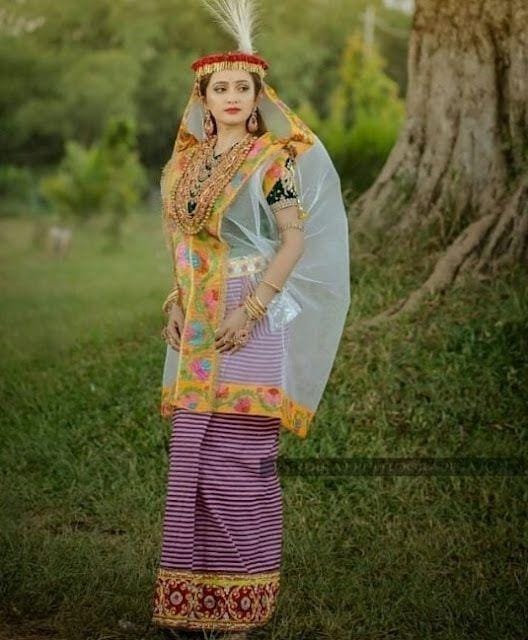Manipur, nestled in the northeastern corner of India, is a state renowned for its rich cultural heritage and vibrant traditions. One of the most striking aspects of Manipuri culture is its traditional attire, which beautifully reflects the state’s history, customs, and artistic sensibilities. Let’s delve into the intricate world of Manipuri traditional dress and explore its significance.

1. Phanek
The Phanek is the traditional wrap-around skirt worn by Manipuri women. This elegant garment is akin to a sarong and is made from handwoven fabrics that often feature bold stripes or intricate patterns. The Phanek comes in two main varieties: the Phanek Mayek Naibi, characterized by horizontal stripes, and the Phanek Innaphi, which is adorned with more elaborate designs.
Phaneks are not just everyday wear; they hold cultural significance and are worn during various festivals and ceremonies. The colors and patterns of the Phanek can signify different social statuses or particular occasions, making it a versatile and meaningful piece of clothing in Manipuri culture.
2. Innaphi
The Innaphi is a traditional shawl that complements the Phanek. It is draped gracefully over the shoulder and upper body, adding an extra layer of elegance to the outfit. Innaphi shawls are usually made from fine, handwoven cotton or silk, and they feature intricate embroidery or delicate motifs that showcase the weaver’s skill.
Innaphi is often worn during festive occasions and religious ceremonies. The beauty and craftsmanship of the Innaphi make it not just a piece of clothing, but a symbol of cultural pride and identity for the women of Manipur.
3. Potloi
The Potloi is a traditional bridal dress that is truly a sight to behold. This elaborate attire is worn by Manipuri brides during their wedding ceremonies. The Potloi consists of a richly decorated skirt, a fitted blouse, and an intricately designed veil. The skirt is usually stiffened to give it a bell-like shape, creating a dramatic and regal silhouette.The Potloi is heavily embellished with beads, sequins, and intricate embroidery, often depicting traditional motifs and patterns. This bridal dress is not only a testament to the bride’s beauty but also a representation of the cultural heritage and artistic prowess of Manipur.
4. Khudei
For Manipuri men, the traditional dress includes the Khudei, a type of loincloth. The Khudei is typically made from white cotton with colorful borders, and it is worn around the waist. Men also wear a simple shirt or a jacket known as the Choudi, which complements the Khudei.During cultural and religious events, Manipuri men may also don a turban or headgear called a Pagri, adding to the overall traditional ensemble. The simplicity and comfort of the Khudei make it a practical yet culturally significant garment for the men of Manipur.
Cultural Significance and Modern Influence

The traditional dress of Manipur is more than just clothing; it is a symbol of identity, heritage, and pride. These garments are woven with care and precision, often by skilled artisans who have inherited the craft from their ancestors. The use of traditional techniques and natural dyes further enhances the cultural value of these dresses.
In recent years, there has been a resurgence of interest in traditional Manipuri attire, both within the state and beyond. Contemporary fashion designers are drawing inspiration from these traditional garments, incorporating their elements into modern designs. This fusion of old and new ensures that the cultural heritage of Manipur continues to thrive while adapting to the changing times.
The traditional dress of Manipur is a beautiful reflection of the state’s rich cultural tapestry. From the elegant Phanek and Innaphi to the regal Potloi and practical Khudei, each garment tells a story of tradition, artistry, and identity. As we celebrate and preserve these traditional attires, we also pave the way for future generations to appreciate and carry forward the legacy of Manipur’s sartorial heritage




